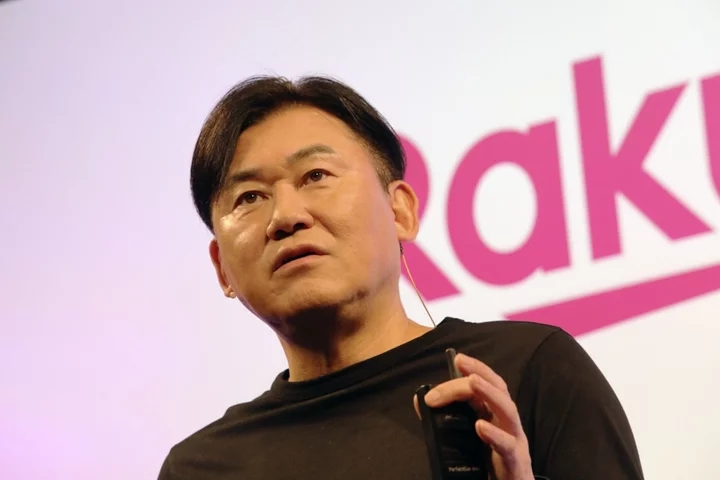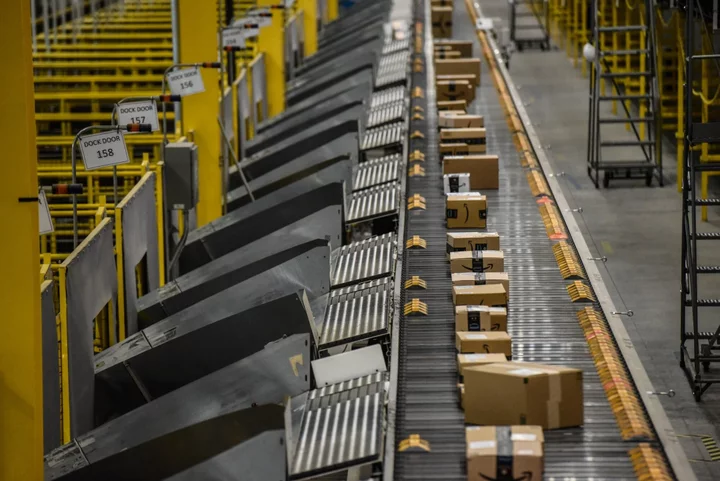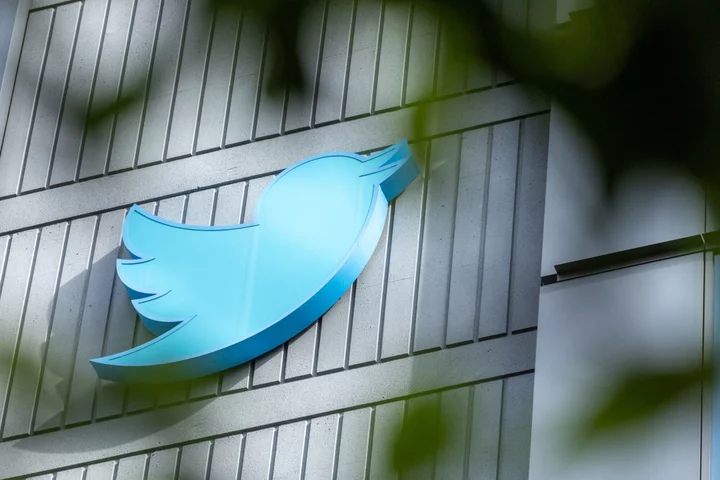Apple Inc. has fallen further behind in its multibillion-dollar effort to make a modem chip for the iPhone, stymied by the complexity of replacing an intricate Qualcomm Inc. component.
After already delaying a plan to have an in-house chip ready by next year, Apple is now likely to miss a goal to ship the component by the spring of 2025, according to people familiar with the situation. That would postpone the release until at least the end of 2025 or early 2026 — the final year of Apple’s recently extended contract with Qualcomm.
The latest snags reflect the daunting task Apple faces in designing its own modem, which lets phones connect to cellular networks for making calls and browsing the web. The component has to seamlessly link up with hundreds of carriers around the world, working across varied environments and conditions. And it has to perform at least as well as technology from Qualcomm, which helped pioneer the field.
Qualcomm shares climbed as much as 1.1% to $130.37 after Bloomberg reported the news Thursday, reversing an earlier decline. Apple was up less than 1% at $189.45 as of 2:54 p.m. in New York.
Thousands of employees have worked on the project since 2018, and still Apple remains years away from cracking the problem. Its goal is for the modem to download data faster than current technology. But people with knowledge of the project, who asked not to be identified, believe that’s unlikely based on the current state of development.
A spokesman for Cupertino, California-based Apple declined to comment.
Apple’s struggles with modem development burst into public view in September, the day before the unveiling of the iPhone 15. Qualcomm said that it would continue to supply Apple with chips for years to come, making it clear that the in-house effort was struggling.
With that announcement, a relationship that was scheduled to end by 2024 was extended through 2026. But the agreement only confirmed what people inside the company had known for a while: Apple’s work to build its own technology had thus far been a disappointment.
It’s been a long and frustrating journey for the company. The first signal that Apple was trying to build its own modem came more than five years ago, when the iPhone maker started recruiting engineers in Qualcomm’s hometown of San Diego. Months later, Apple announced plans for local offices.
At the time, Apple and Qualcomm were waging a legal battle over modem royalties. But the two companies settled that suit in 2019, and Qualcomm agreed to supply 5G modem chips for the iPhone 12 in 2020 and beyond.
Just a few months after reaching that truce, Apple made it clear that it planned to eventually drop Qualcomm altogether. It agreed to pay $1 billion to buy Intel Corp.’s beleaguered modem division. And Johny Srouji, Apple’s senior-most executive in charge of hardware components, said at a companywide meeting that work on the modem was full steam ahead.
To help the ex-Intel engineers it was getting from that deal, Srouji hired hundreds of other wireless technology experts, including employees from Qualcomm and MediaTek Inc. Apple initially believed it could get its own modem into an iPhone as soon as 2024. Early on in the project, codenamed Sinope, Apple determined that its first device with the chip would be an update to the iPhone SE.
That phone is a lower-budget model that only gets updated sporadically. It doesn’t attract the attention or purchase volume of major new iPhones released ahead of the holiday season. And, importantly, its buyers don’t typically demand cutting-edge technologies. So, for a company trying its hand at a modem for the first time, putting the chip in the SE was seen as a safe choice.
Still, a modem is one of the most important parts of a phone. If it doesn’t work properly, calls can be dropped and users lose their internet connection. Shipping a faulty modem would have been one of the biggest flubs of Tim Cook’s tenure as chief executive officer.
That’s a mess Apple is looking to avoid. Around when the company re-upped its agreement with Qualcomm, the 2024 iPhone SE plan was postponed by a year to 2025. Now people familiar with the work believe a launch might not come until a year after that.
For its part, Qualcomm expects to supply at least a portion of Apple’s modem chips in 2026. It has said that Qualcomm will account for about a fifth of the components that year — an amount that could go higher.
“We are planning as if we’re going to get 20% share,” Akash Palkhiwala, Qualcomm’s chief financial officer, told analysts earlier this month. “But to the extent that we get more than that, that’d be upside.”
Apple’s plan is to eventually bring its in-house modem to the iPad and smartwatch, following a launch in the iPhone. Those devices have a less-pressing need for cellular connections, so they’re not as much of a priority.
Apple’s first modem will be a standalone chip, meaning that it’s a separate component inside of the iPhone. But the company is already developing a follow-up system that combines the modem with a so-called system-on-a-chip, saving space inside the device. It’s also designing its own wireless and Bluetooth semiconductor that could replace Broadcom Inc. components in the next few years, Bloomberg News has reported, but that project is facing its own hiccups.
Inside the technology giant, the modem effort is considered one of the company’s largest.
It’s a cross-functional project that involves the Srouji-led hardware technologies group and a separate hardware engineering division, as well as the company’s software engineering unit, which helps write the code for the modem. The person under Srouji leading the effort is longtime chip executive Zongjian Chen.
“It was fairly obvious from the beginning this was going to be a rough project.”
As of now, Apple’s modem is still considered at an early development stage — and people working on it believe the initial version may lag behind the competition by years. For instance, at least one version of the first modem in development doesn’t support a standard known as millimeter wave, or mmWave. That technology, marketed primarily by Verizon Communications Inc., enables speeds about five times faster than regular 5G connections. Current iPhones support that feature. But a final decision on whether or not to include the technology in Apple’s component hasn’t yet been made.
One major development snag involves the software used to power the modem, some of which was acquired from Intel. The Intel code wasn’t up to the task, and most of it had to be rewritten from scratch, people involved in the project said. As Apple engineers sought to add new features, existing capabilities would break, and the modem wouldn’t work properly.
There’s also a long testing phase ahead. So far, the company has tried out the modem inside current iPhones, putting the technology through its paces within Apple’s offices as well as in mobile test vans that drive around Silicon Valley.
But unlike computer processors, modems need to be evaluated with hundreds of different wireless carriers. Apple is able to simulate these connections with its own testing centers, but real-world trials over decades is what helped Qualcomm develop what is considered the industry’s leading modem.
“It was fairly obvious from the beginning this was going to be a rough project,” according to another person with knowledge of the situation. “Why we thought we could take a failed project from Intel and somehow succeed is a mystery.”
Another challenge: The hardware technologies group is stretched thin working on many different projects, other people said. And defections have made it more difficult for Apple to resolve engineering snags.
The company also has to be careful not to infringe Qualcomm’s patents. Right now, Apple pays the chip developer about $9 for each iPhone that includes its technology. The company could still be on the hook to pay fees if a new modem is found to infringe Qualcomm’s patents.
With that in mind, engineers are carefully avoiding proprietary Qualcomm technologies and development techniques, an arrangement that has slowed the effort’s progress. Apple’s internal modem teams are intentionally separated from other groups that integrate Qualcomm chips into existing and nearer-term products.
That’s added additional pressure to an already difficult process. “We’re scared of being sued,” said one of the people.
(Updates with shares in fourth paragraph.)









